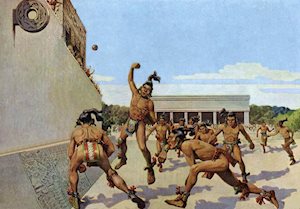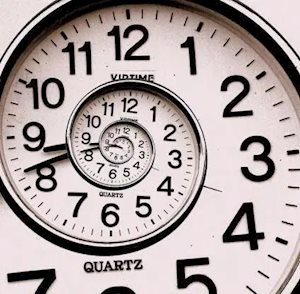Strange times are these – particularly if you’re into sports on any level. Overnight an enterprise in which we’d typically invested a sizable fraction of our time and/or bankroll evaporated, leaving some to betting Madden sim games online and the seriously desperate to wager on marble racing. A revelation regarding sports may have occurred to some as well, i.e. maybe sports just aren’t that essential.
(Now don’t get NFLbets wrong here: Just because something is not essential does not mean that it’s useless; after all, the human spirit and aesthetic sense must also be nourished. The human species would be a far sadder lot without folk song and literature and visual art, all as literally nonessential as NFL football.)
In researching for the Truly The GOATs sports history podcast, a few concepts became readily apparent to me:
• Humans have played sports, or sports-like games, for thousands of years;
 • Complicated organized sports are created by cultures which can support them, i.e. citizens have enough leisure time and society can allow for time and/or specialization of players;
• Complicated organized sports are created by cultures which can support them, i.e. citizens have enough leisure time and society can allow for time and/or specialization of players;
• For much of the world, the golden age of sports is unquestionably the 20th century;
• Not all cultures have organized sport; and
• Teams, leagues and even entire sports die.
From a dispassionate historical perspective, then, the future of NFL football is short and bleak. Indeed, we may right now be seeing the final few seasons of the league – or we will someday. In fact, the coronavirus pandemic may simply be hastening the demise of a league and an entire sport which might otherwise have been dragged out for 20 years more.
Impossible, you say? Football is an indelible part of American culture? Too big to fail, you believe? Well, acceptance of cruel fate comes late, well later than the ennui-to-panic NFL fans, bettors and officials are feeling in month three of the COVID-19 pandemic.
Warning signs already prevalent, obvious, ominous
More and more paleontologists are coming around to the idea that, before the planet-killing meteor struck planet Earth to wipe ’em out, most dinosaur species were already in precipitous decline: The extinction-level event merely completed with stark finality the process that had already begun. By analogy, we think of the NFL as the dinosaur, the Earth as the sport of football and the extinction-level event as … um, er, COVID-19 has clouded that particular bit of the metaphor.
Back to the present. Consider what NFL football looked like to the non-fan going into year 2020: Youth participation is down in schools in every state due to parental concerns about football’s long-term health effects. NCAA football is turning the corner on fairly distributing money to its players but far too slowly.
In the big league, meanwhile, it’s seemingly one scandal after another involving on-field cheating and doping, off-field crime and violence. Simultaneously, the American public has becoming evermore aware of the league’s (mostly) billionaire owners regularly fleecing the home city’s citizens to pay taxes to construct a shiny new privately-owned stadium – stadiums which host games which typically price out the average citizen.
The most recent example of this last phenomenon comes from good ol’ Los Angeles – you know, the city which had zero NFL teams for a generation and is reportedly now home to two…? The main selling point of Walmart baron/Los Angeles Rams owner Stan Kroenke’s plan to build a $1 billion-plus pleasure palace/home venue for the Rams and Chargers was that he’d be paying out of his own sizable coffers. The project is currently nearing $4 billion over budget, has been delayed once again “thanks” to COVID-19, with the difference certainly to be made up by the city government, with taxes to repay the unexpected expense.
And don’t get NFLbets started on the whole anthem-kneeling thing.
You can also throw away Super Bowl viewership numbers, too. Firstly, evidence suggests that these numbers peaked in 2015; second, 7 of the 9 top-rated Super Bowls – and the entire top-5 – in terms of audience included Peyton Manning or Tom Brady. Neither of these awe-inspiring charismatic dudes is likely to play in another.
Precedent for the NFL’s extinction
 In 1905, meetings were held between colleges with America’s leading football programs (essentially the Ivy League schools plus a handful of others) in consideration of the question of whether football should be made illegal. You read that right: These deans, proto-ADs and such were debating whether playing the game should become a crime. Truth be told, had Teddy Roosevelt’s own son not been injured and thus inspired the POTUS himself to call for rules reforms, the 19 killed on football fields in ’05 could well have been enough to kill football before the forward pass came to full fruition.
In 1905, meetings were held between colleges with America’s leading football programs (essentially the Ivy League schools plus a handful of others) in consideration of the question of whether football should be made illegal. You read that right: These deans, proto-ADs and such were debating whether playing the game should become a crime. Truth be told, had Teddy Roosevelt’s own son not been injured and thus inspired the POTUS himself to call for rules reforms, the 19 killed on football fields in ’05 could well have been enough to kill football before the forward pass came to full fruition.
NFLbets has suggested that, as macabre as it sounds, one on-field death in an NFL game, with tis millions of viewers weekly, would essentially guarantee the loss of up to half the audience overnight. This isn’t the 1970s, when Formula 1 drivers were killed at a rate of more than 1 per season: Today’s public is well more likely to turn off, as fatalities are no longer a norm in football or any regularly televised sport.
Unlike all other major sports, which enjoy viewership and participation across large swathes of Earth, significant interest in gridiron football is limited to exactly two countries: America and Canada. This limited talent base plus the still-great interest in college football are the primary reasons why minor/rogue leagues have proven unsustainable, with the sole exception of the AFL. The AAFC, WFL, USFL, UFL, XFL, AAF and XFL 2.0 have all been crushed under the NFL steamroller.
The AFL was a beneficiary of right-place, right-time: When the rogue league was formed in 1960, the NFL included just 13 franchises, and just three – the Rams; the San Francisco 49ers, assimilated from the AAFC; and the just-born Dallas Cowboys – played home games west of St. Louis. At that time, the U.S. population was about 180 million, meaning the ratio of Americans to a single NFL team was 13.9 million to 1; the ratio in 2020 is down to 10.33 million to 1. The AFL was fortunate to have come along when the potential talent could be absorbed into a competitive pro-level team and when many big and/or burgeoning markets (e.g. Boston, Houston, Denver) were without a home team.
Well more concerning than even the ugly AAF trainwreck and the new XFL’s death by pandemic, however, is the impending doom facing the Canadian Football League. CFL commissioner Randy Ambrosie went before a Canadian House of Commons committee on May 7 to request bailout money for the league’s continued existence.
Acknowledging that “Our best-case scenario for this year is a drastically truncated season, and our most likely scenario is no season at all”, Ambrosie went on to admit the league was looking at $30 million in debt already and would need $120 million more to keep the league going in 2021 and beyond. Judging by Canadian media reportage, their federal government is none too keen on propping up a league which is weakest in the country’s three biggest markets of Toronto, Montreal and Vancouver.
Now one may argue that the problems the CFL must deal with post-pandemic are unique to that league. Interest is low in Toronto and Montreal because of the “big league” sports already in town, and the CFL draws most of its revenue from gate receipts rather than TV. Ironically, improvements in television technology surely also factor into declining attendance, particularly in the colder months of October and November.
But the financial woes are not the point. The CFL has roots going back to the origins of the game itself: The CFL’s top prize, the Grey Cup, has been awarded to Canada’s champion football team since 1909, and the Toronto Argonauts have a history spanning back to 1873, a time when rugby and gridiron football were barely distinguishable and Canada itself was just four years old. Yet none of this matters, as this national institution could be wiped out forever by July, its league officials, franchise owners, coaches and players as helpless as were those of the near-stillborn AAF.
Borrowed time must be repaid
 The NFL has been living – thriving, really – on borrowed time since CTE’s effects and their relationship with football playing were exposed to the American public. In totem with the anthem-kneeling controversy, the socially conscious NFL fan must indulge in some serious doublethink to enjoy the sport at all in the 2010s. How popular would NFL football have been by 2020 if not for the all-time outlier Tom Brady and the concomitant über-success of his New England Patriots, a.k.a. the Dynasty You Love to Hate?
The NFL has been living – thriving, really – on borrowed time since CTE’s effects and their relationship with football playing were exposed to the American public. In totem with the anthem-kneeling controversy, the socially conscious NFL fan must indulge in some serious doublethink to enjoy the sport at all in the 2010s. How popular would NFL football have been by 2020 if not for the all-time outlier Tom Brady and the concomitant über-success of his New England Patriots, a.k.a. the Dynasty You Love to Hate?
And then there’s that tv audience, which will almost inevitably shrink from 2019 norms and never truly return. Call it the Fitness Club Principle: You know how, if you go to the gym every day, the act becomes habit? Then you miss one day in the regular schedule and voila: The subsequent day, justification to skip again is a lot easier, and even easier the day after that and the day after that, etc. Soon you find you’re still paying gym membership, but you haven’t actually attended in a couple of months. Once one loses the rhythm of habit, it’s much harder to pick things back up.
NFLbets bets The Fitness Club Principle is coming to most professional sports in America, and the NFL could well suffer the greatest. At this point in the pro sports blackout, only the most rabid fans are truly still hurting and – pure speculation here – it’s just not an absolute certainty that football played in an empty stadium and stripped of much of its ritualistic pageantry won’t draw the expected viewership.
Our advice
Maybe the graveyard spiral of the CFL is getting to us, but such stark reality in the face is impossible to ignore. We’re playing the 20s pragmatically vis-à-vis football and thus we’re only counting on the NFL continuing for about five more years. For 2020, we’ll be attempting to learn how to adjust our traditional NFL betting ways for a new reality of fan-less stadia and diluted homefield advantage – and let’s just hope Super Bowl LV isn’t our last chance to dig on NFL football…
–written by Os Davis